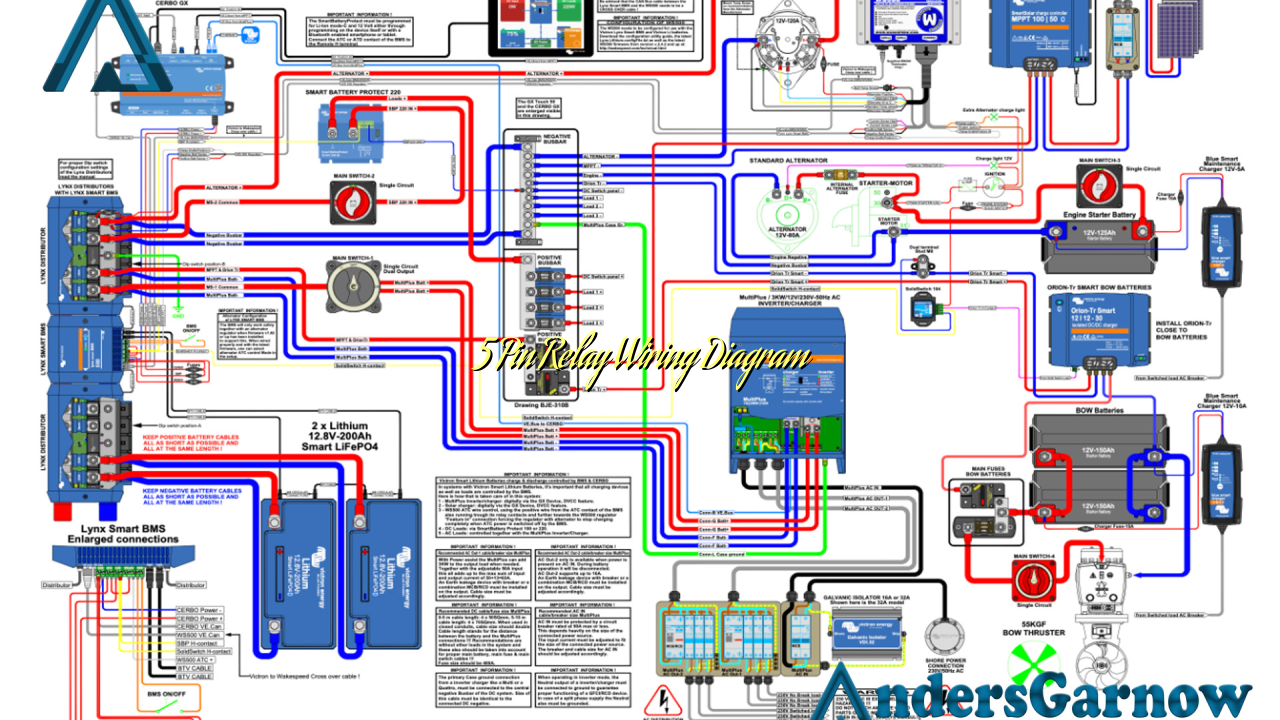Hello! Welcome to our article on the 5 pin relay wiring diagram. In this comprehensive guide, we will provide you with detailed information about the wiring diagram, its advantages, disadvantages, alternative options, and frequently asked questions. So, let’s dive right in!
1. Understanding the Basics of 5 Pin Relay Wiring
Before we proceed further, let’s have a clear understanding of what a 5 pin relay is and how it works. A relay is an electromechanical device that allows a low-power signal to control a high-power circuit. The 5 pin relay, as the name suggests, consists of five pins, each serving a specific purpose in the circuit.
Pin 30: Common contact (C)
Pin 87: Normally Open contact (NO)
Pin 87a: Normally Closed contact (NC)
Pin 85: Coil ground (GND)
Pin 86: Coil positive (12V)
2. Advantages of Using a 5 Pin Relay
There are several advantages to using a 5 pin relay in your wiring setup:
- High reliability and long lifespan
- Ability to handle high current loads
- Easy installation and compatibility with various applications
- Improved safety by isolating the control circuit from the high-power circuit
- Flexibility in wiring configurations
3. Disadvantages of Using a 5 Pin Relay
While the 5 pin relay offers numerous advantages, it also has a few limitations:
- Relatively larger in size compared to smaller relays
- Higher cost compared to basic relays
- Requires careful consideration of wiring connections
- May generate electrical noise
4. Detailed Wiring Instructions
Now, let’s delve into the detailed wiring instructions for the 5 pin relay:
- Connect Pin 30 to the power source that supplies the high current load.
- Connect Pin 87 to the device that needs to be powered.
- If the circuit requires a normally closed connection, connect Pin 87a to the device.
- Connect Pin 85 to the ground (GND) of the control circuit.
- Connect Pin 86 to the positive side (12V) of the control circuit.
5. Alternative Options for Wiring
While the 5 pin relay is commonly used, there are alternative options available depending on your specific requirements:
- 4 Pin Relay: Suitable for applications that do not require a normally closed contact.
- 3 Pin Relay: Ideal for simple on/off operations with lower current loads.
- 6 Pin Relay: Offers additional features like multiple normally open and normally closed contacts.
6. 5 Pin Relay Wiring Diagram Table
| Pin Number | Function | Description |
|---|---|---|
| 30 | Common (C) | Connects to the power source |
| 87 | Normally Open (NO) | Connects to the device that needs power |
| 87a | Normally Closed (NC) | Connects to the device when no power is applied |
| 85 | Coil Ground (GND) | Connects to the ground of the control circuit |
| 86 | Coil Positive (12V) | Connects to the positive side of the control circuit |
7. Frequently Asked Questions
Here are some frequently asked questions about the 5 pin relay wiring diagram:
Q: Can I use a 5 pin relay for low current applications?
A: Yes, you can use a 5 pin relay for low current applications, but it is recommended to choose a relay with a lower current rating for optimal performance.
Q: How do I determine the appropriate wire gauge for the relay?
A: The appropriate wire gauge depends on the current load of the device you are powering. It is essential to consult a wire gauge chart or an electrician to ensure proper wiring.
Q: Can I connect multiple devices to a single 5 pin relay?
A: Yes, you can connect multiple devices to a single 5 pin relay by utilizing the normally open and normally closed contacts. However, ensure that the total current load does not exceed the relay’s capacity.
Conclusion
In conclusion, the 5 pin relay wiring diagram provides a reliable and efficient solution for controlling high-power circuits. It offers numerous advantages, including high reliability, easy installation, and flexibility in wiring configurations. However, it is essential to consider the size, cost, and potential electrical noise generated by the relay. By following the detailed wiring instructions, you can effectively utilize the 5 pin relay in various applications. If the 5 pin relay does not meet your specific requirements, there are alternative options available. We hope this article has provided you with valuable insights into the 5 pin relay wiring diagram.

